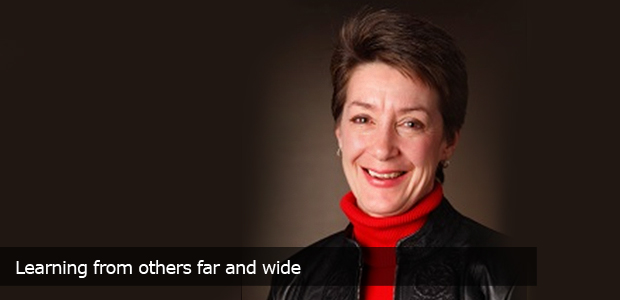Learning from others far and wide

Imagine a health system where people are encouraged to stay healthy and high functioning in their homes and communities; where people are active participants in their health and health care planning, and supported to engage in healthy behaviors that will reduce their risk of chronic disease; and where people have access to health information that is reliable, valid and easy to understand. This is all possible, and it’s happening in locations across the world.
Alberta Health Services and Alberta Health continue to ‘mine’ forward-looking practices from our peers while we work with Albertans to plan a healthcare system in 2031. We wanted to share some real examples of practices that are already working within health systems elsewhere (or soon will be):
- What they did: the Southcentral Foundation in Alaska underwent an “intentional whole-system redesign,” by transferring the responsibility of services from the government to the local people. The system was designed in partnership with the people, based on the local needs:
- Primary care, mental health and community services were integrated into one service delivery model.
- Specialty clinics were closed and specialists were brought into primary care teams.
- Patient flow was enhanced through the development of communication channels.
- Primary care teams and acute care physicians work collaboratively to better support patients in primary care.
Examples of how the new practice helps people: if a person requires care, they have access to a health system that is consistent, dependable and easily accessible. Health care costs have decreased, the quality of health services has increased, and patient outcomes are among the best in the United States.
- What they did: in the Netherlands, primary care services have been restructured to offer 24/7 care to their patients:
- The restructuring involved primary care physicians and other care providers, and reflects a shift from a solo physician model to multidisciplinary teams.
- General practitioners act as gatekeepers and are responsible for navigating patient care. Through the development of primary care co-operatives, 40 to 120 general practitioners can cover a population of 50,000 to 500,000 individuals. There are over 120 co-operatives covering 90% of the Dutch population.
- After hours care is offered by telephone, in the clinic and at home from 5:00 p.m. to 8:00 a.m., 7 days a week.
An example of how the new practice helps people: Primary care services are offered around the clock, so people can avoid waiting long hours in the emergency department and address a health issue that can be treated by a family physician at a time that is convenient.
- What they are working on: Kaiser Permanente (a health system based out of California) will perform more virtual care than in-person care by 2018. Certain departments such as Psychiatry, Orthopedics, Pediatrics and Physical Medicine are now offering integrated video visits as an alternative to regular face to face appointments.
Examples of how the new practice will help people: With virtual health care, people can avoid sitting in traffic, parking, and spending time in the waiting room:
- People will have the opportunity to contact their health care provider online via e-mail, or by phone, in order to address a health related question or concern.
- People will be able to access care virtually through their smart phone, and at home (via remote monitoring) at a time that is most convenient to them.
Imagine a health system that is built around the needs of Albertans.

